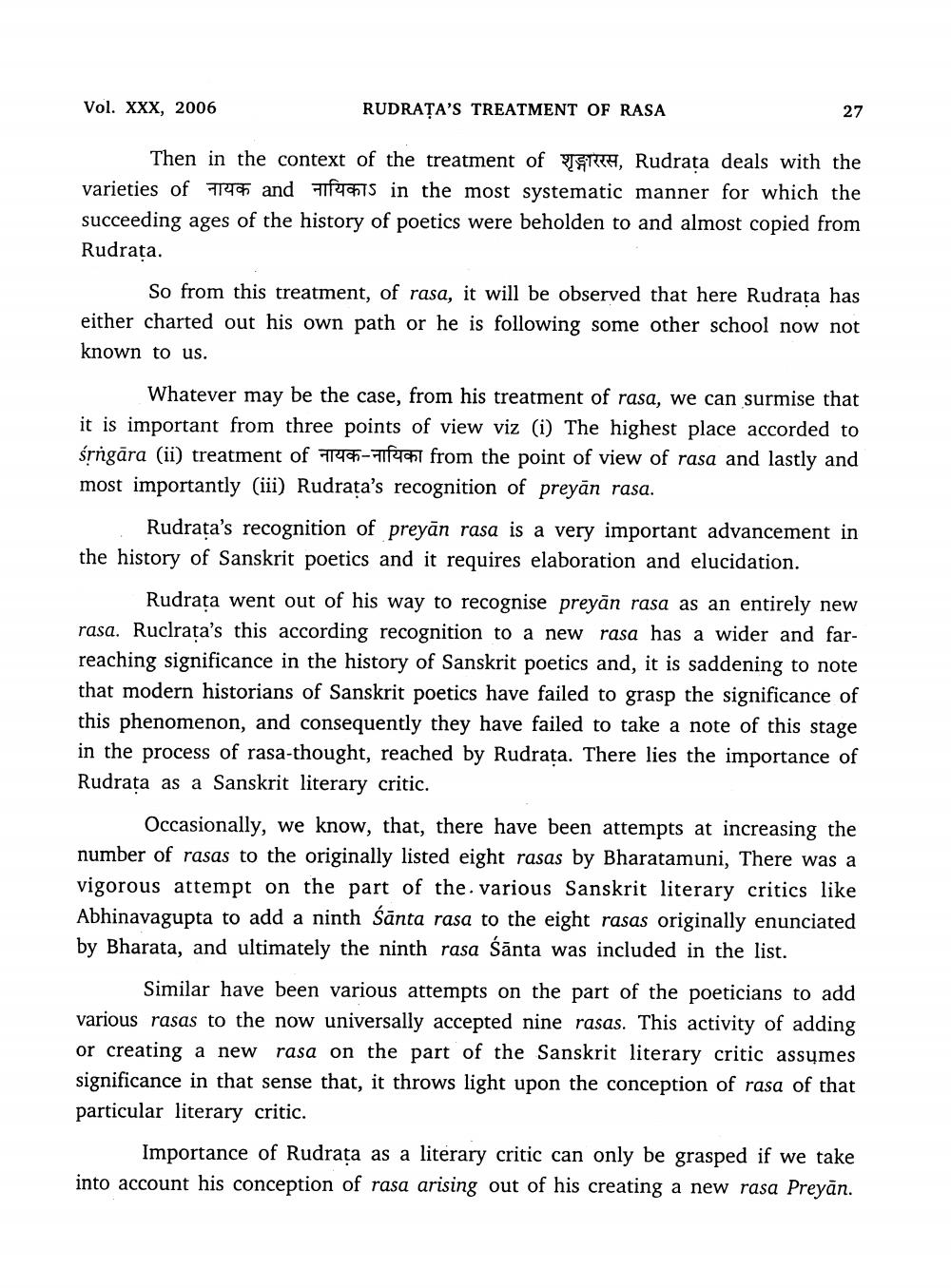________________
Vol. XXX, 2006
RUDRATA'S TREATMENT OF RASA
27
Then in the context of the treatment of SRH, Rudrata deals with the varieties of track and Fifts in the most systematic manner for which the succeeding ages of the history of poetics were beholden to and almost copied from Rudrata.
So from this treatment, of rasa, it will be observed that here Rudrata has either charted out his own path or he is following some other school now not known to us.
Whatever may be the case, from his treatment of rasa, we can surmise that it is important from three points of view viz (i) The highest place accorded to śrngāra (ii) treatment of 7140-fach from the point of view of rasa and lastly and most importantly (iii) Rudrața's recognition of preyān rasa.
Rudrata's recognition of preyān rasa is a very important advancement in the history of Sanskrit poetics and it requires elaboration and elucidation.
Rudrata went out of his way to recognise preyān rasa as an entirely new rasa. Ruclrața's this according recognition to a new rasa has a wider and farreaching significance in the history of Sanskrit poetics and, it is saddening to note that modern historians of Sanskrit poetics have failed to grasp the significance of this phenomenon, and consequently they have failed to take a note of this stage in the process of rasa-thought, reached by Rudrata. There lies the importance of Rudrața as a Sanskrit literary critic.
Occasionally, we know, that, there have been attempts at increasing the number of rasas to the originally listed eight rasas by Bharatamuni, There was a vigorous attempt on the part of the various Sanskrit literary critics like Abhinavagupta to add a ninth śānta rasa to the eight rasas originally enunciated by Bharata, and ultimately the ninth rasa śānta was included in the list.
Similar have been various attempts on the part of the poeticians to add various rasas to the now universally accepted nine rasas. This activity of adding or creating a new rasa on the part of the Sanskrit literary critic assumes significance in that sense that, it throws light upon the conception of rasa of that particular literary critic.
Importance of Rudrata as a literary critic can only be grasped if we take into account his conception of rasa arising out of his creating a new rasa Preyān.




